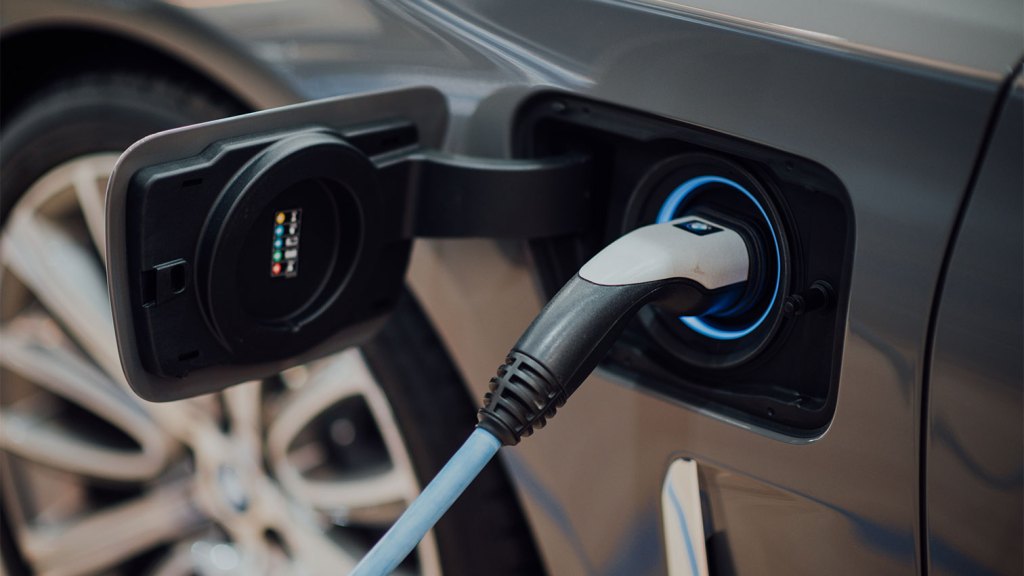Topics
Latest
AI
Amazon
Image Credits:Chuttersnap(opens in a new window)/ Unsplash
Apps
Biotech & Health
Climate

Image Credits:Chuttersnap(opens in a new window)/ Unsplash
Cloud Computing
Commerce
Crypto
Enterprise
EVs
Fintech
Fundraising
convenience
gage
Government & Policy
Hardware
Layoffs
Media & Entertainment
Meta
Microsoft
Privacy
Robotics
Security
Social
Space
Startups
TikTok
Transportation
speculation
More from TechCrunch
Events
Startup Battlefield
StrictlyVC
Podcasts
telecasting
Partner Content
TechCrunch Brand Studio
Crunchboard
Contact Us
In the pursuit to coax more capacity from electric vehiclebatteries , auto manufacturer are more and more turning to silicon , a widely usable but fragile constituent that promise to boost capacity by at least 20 % .
Sila , Group14 , Enovix and Amprius are all hear to commercialise their silicon anode technology , hop to cash in in on consumer ’ desire for ever more EV range .
Ionobell , a seed - stage inauguration , is hoping to be at the top of that list , claim its atomic number 14 cloth will be cheaper than the established challenger .
The diminished inauguration uses an approach that ’s most similar to Sila and Group14 . Both established company impregnate porous plumbago structures with silicon ; Sila also adds a coating to the particles . Ionobell appears to flip over the script , according to the company’spatents . It starts with a porous silicon structure alternatively of a graphite one and then surrounds it with a finishing .
“ It does n’t swell up , ” Ionobell co - founder and CEO Robert Neivert told TechCrunch . “ Like dropping a nerf clump in water system , it absorbs without the verboten eggshell changing . ”
Silicon can take 10 times more lithium ion than plumbago . But it swells a fate in the process , so much so that an ordinary silicon anode can dilapidate with repeated use . That breakability has maintain manufacturing business from incorporating too much of the element , typically less than 10 % .
Still , silicon ’s hope is too great to overlook .
Join us at TechCrunch Sessions: AI
Exhibit at TechCrunch Sessions: AI
Ionobell ’s silicon supply comes from a thriftlessness material , Neivert sound out , which helps keep toll down . “ Most of the cost savings is substantial , ” he say , add up that Ionobell ’s textile is bum than graphite .
Neivert initially run into Ionobell as an investor . At first , he said , “ I pooh-pooh them as an investment , ” telling them all the reasons why self-propelled suppliers would n’t take their technology . The team went back to oeuvre , solving the issues to Neivert ’s atonement , admit adapting their material to work on widely used fabrication equipment . Neivert receive some initial funding and joined them as chief operating officer .
The last round closed in 2020 , according to PitchBook . late , though , Ionobell closed an unpriced $ 3.9 million semen prolongation , TechCrunch has exclusively learned . Dynamo Ventures and Trucks VC led the round of golf .
Such extensions have become more commonplace as deep tech firms move short on capital but fight to raise a fresh price rhythm as market originate to reset after a frothy begin to the 2020s .
Like other barrage fire materials companies , Ionobell faces a challenging route ahead . The validation process required by automotive companionship can be long and straining ; not every stuff create it through .
Plus , competitors like Group14 and Sila are unaired to commercialization , and their silicon - rich anodes will be hitting the market as early as this twelvemonth and next .
Ionobell has a lot of ground to make up , though its hope of a lower price could give it a boost . Whatever the case , the next wave in atomic number 3 - ion innovation is almost here , and atomic number 14 is leading the coterie .